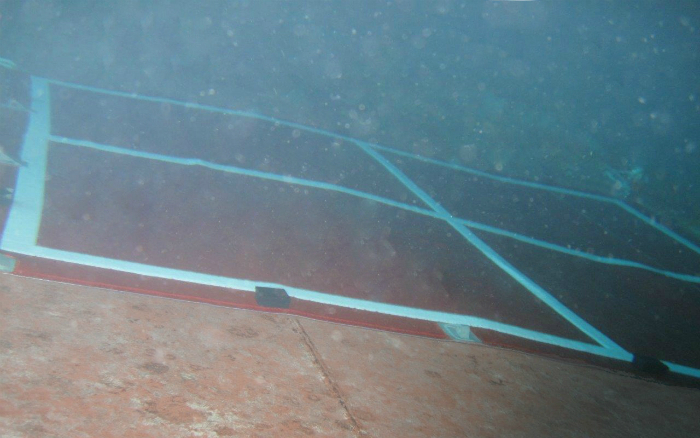The use of magnetic patches has resulted in the oil field supply ship CM Service returning to work in just 60 days after its hull was holed in the Caspian Sea in November. The 54 metre vessel was on supply duties offshore Kazakhstan when it hit an uncharted object that ripped two holes in its hull plating just below the engine room.
There were no injuries but the engine room was flooded and a diver’s inspection revealed two gashes, one 60 by 20 cm and the other 80 by 10 cm. The ship was 300 miles from the nearest dry dock in Baku and towing it there while the engine room remained flooded would have been an insurance nightmare.
The conventional and time consuming alternative would have been to use divers and attempt to weld patches to the 10 mm hull plating underwater. Instead an Emergency Response Bag of magnetic patches was flown-in from Miko Marine AS in Norway and delivered to the CM Service following day.
The flexible magnetic patches were quickly fitted over the holes by in-house and contract divers who added reinforcing with supplementary high-power magnets. Once in place, the magnetic patches enabled the engine room to be pumped partly dry and the ship was under tow to Baku within six hours. At the end of a two day voyage conducted at 5 knots, the CM Service entered a dry dock in Baku where the patches were found to be completely intact with the supplementary magnets undisturbed by the voyage.
“The magnetic patches proved to be a major benefit to us,” said George Macleod, director of Caspian Mainport, the ship’s owner. “It is a fantastic system as it saved us a huge amount of time and money. It could have been a very complicated repair job but the magnetic patches got us out of a difficult situation and the ship has now gone back to work.”
Nicolai Michelsen, managing director of Miko Marine AS believes that the emergency repair to the CM Service was a perfect example of how magnetic patches can benefit a ship operator. “The patches are extremely strong and can provide an almost instant seal to a hole in a hull or in a leaking tank,” he said. “As long as the damage is not too uneven, a magnetic patch that is three times larger than the hole can create a watertight seal so our Emergency Response Bags contain a variety of sizes to cope with most situations. Although we can despatch them very quickly from Norway, some users, particularly tanker operators and naval vessels, prefer to keep a bag on every ship so that it is available for immediate use. An alternative is for a bag to be stored at a company’s shore base from where it can be flown out to a ship by helicopter in an emergency. The sooner a patch can be applied the safer the ship will be and it is a perfect example of how valuable the simple science of magnetism can be.”
“If a hole is torn into a hull and it leaves a surface that is too uneven for magnetic patches to be applied, we recommend the use of our “hat-shaped” patches,” said Michelsen. “These are made from similar high strength materials and further reinforced by Kevlar/aramide fibres so they are similar to the fabrics used in bullet proof vests. Their shape enables them to fit over any dents or protrusions and they are fixed in place over the hole by divers using a combination of permanent magnets and special “staples” that can penetrate the hull plating and secure the patch. This can create a temporary repair of sufficient quality to satisfy a ship’s insurers so that it can undertake a substantial voyage to a dry dock,” said Nicolai Michelsen.




